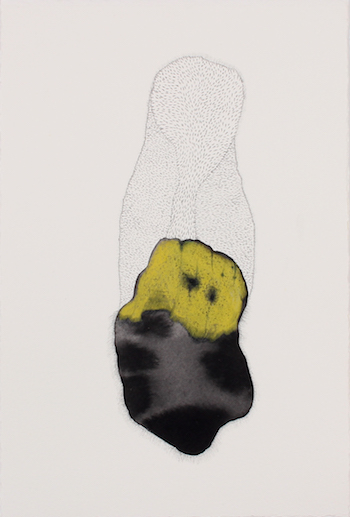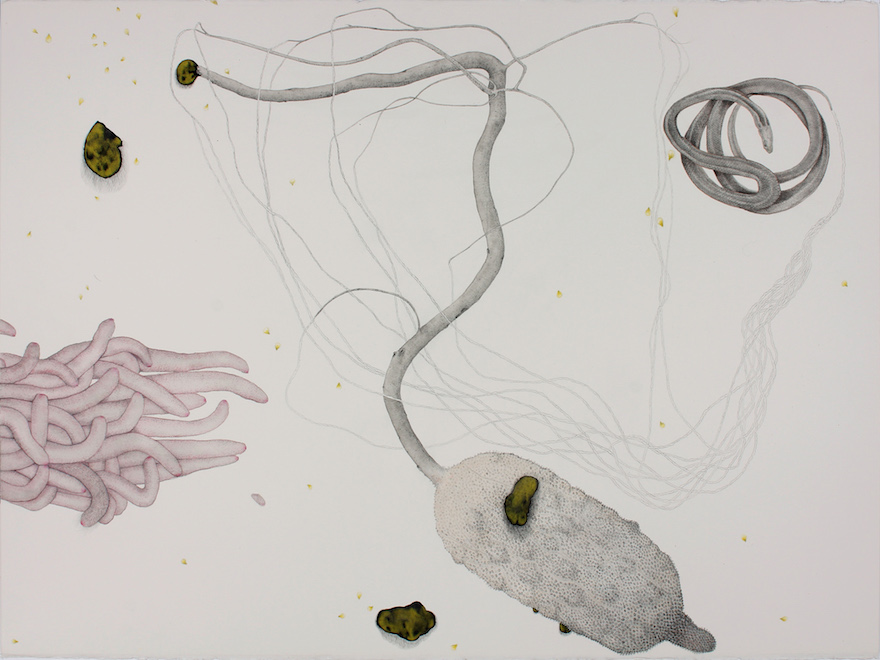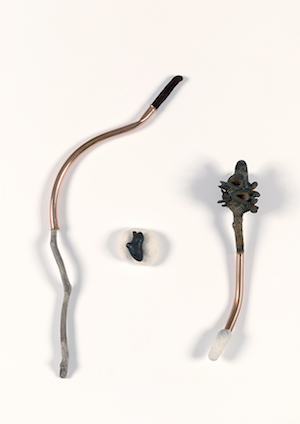Finding sensuality in organic objects is one of the central ideas behind “Sensual Nature”, an exhibition that opens at Fremantle Arts Centre, March 29. It’s a concept that comes from one of the 12 artists whose work is featured in the exhibition, WA’s Lia McKnight. A curator as well as an artist, McKnight tells Seesaw’s Nina Levy more about her career in the arts and the ideas that drive her work.

Nina Levy: Is it challenging being a curator but also finding time to make your own work?
Lia McKnight: Yes, it’s very difficult to find the creative energy and the time to do both. For that reason, I made a choice many years ago not to take on projects as an independent curator – it was just too hard to have a family, a job, curate shows AND be an artist. I have been fortunate to be able to curate (or co-curate) three exhibitions over the past few years as part of my role as collection manager at the John Curtin Gallery. I do find that I tend to work less on my own creative projects during these times.
NL: When did you know that you wanted to be an artist? And how did you find your way to making a sustainable career in the arts?
LM: We always had art materials in my home when I was growing up – my mum was an art teacher and very creative herself. After I left school I went straight into a teaching degree as it didn’t seem at all possible to be an artist. I ended up changing courses a few times and doing other things until I finally went back to do a visual arts degree when I was 22. I knew then that I was in the right place and it was wonderful. Being an artist in the “real world” is much harder than art school though and it was a long time until I was in a position to really prioritise that. At the end of the day, it’s a lot of hard work and persistence.

NL: Your bio states, “Privileging lived experience and emotional geographies as areas of intrigue, [Lia McKnight’s] work seeks to speculate on the shifting parameters of identity and context.” Tell me more!
LM: This is a rather convoluted way of saying that I am interested in the everyday – what we feel and experience, as well as the objects and environments that we live with. This includes psychological states, dreams and the unconscious. You could draw connections to an artist like Louise Bourgeois who created work that directly referenced her own internal reality and memories or experiences of her childhood. In this way, aspects of life that have traditionally been framed as feminine (and therefore lesser), such as emotion, domestic realms and so on, are provided equal status to, or primacy over, intellect.
I am interested in the ways in which we identify ourselves and the things around us and how this is constantly changing depending on a vast range of factors. To give an example, the sourced imagery and collected objects that I reference in my work have been found around the bushland and coastline where I regularly walk: places close to my home outside Fremantle. They are humble and everyday objects but placed and arranged in my studio, they become precious. This particularly became the case last year when some of the places I walked were bulldozed as part of the Roe 8 project. The banksia nuts, balga resin and sticks I had collected became like artefacts or sacred objects. To cycle back to that original sentence, my drawings and sculptures find inspiration in collected objects from the natural environment, while also revealing the darker, uncanny world of the psyche.

NL: “Sensual Nature” has been developed from an idea that is credited to you. What was the original idea? How did it land up being developed into this exhibition?
LM: I proposed a solo exhibition to Fremantle Arts Centre and there were a number of themes and ideas described within my proposal that resonated with curator Ric Spencer. I spoke about the sensual experience of objects and ways in which imagery of natural or organic forms can connect to the subconscious, the erotic and the uncanny. There were also connections to broader environmental concerns. Ric and I are both interested in the writings of cultural ecologist and philosopher David Abram who describes the possibility of an active participation with nature, saying, “Perception is a kind of improvised dance with the world, a dynamic interaction between my sensing body and the sensuous landscape.”
Ric could see the potential for this to be broader than one small personal story and there are now eleven other amazing artists on board.
NL: Tell me about the work you have made for “Sensual Nature”
LM: I have created a series of ink and graphite drawings that interweave imagery of collected findings from the natural environment with a kind of process-driven “stream of consciousness” technique. I have also created a number of sculptural works that combine ceramics and textiles that I describe as “uncanny assemblages”. There is a dark humour to many of these works and they all shift between the real and imagined.
NL: What is your favourite playground equipment?
LM: Ooh I love a good slide. Or if it’s an extra cool playground, the flying fox!
“Sensual Nature” runs March 29 – May 20.
Top: Lia McKnight.
Like what you're reading? Support Seesaw.





